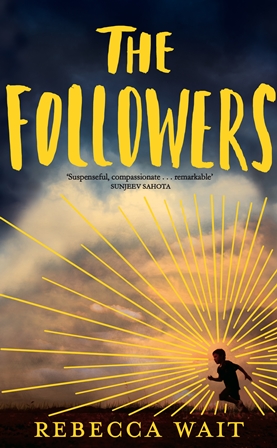Rebecca Wait discusses what jumping between the past and present can add to your novel, and how to do so successfully.

At primary school, you’re taught that a story has to have a beginning, a middle and an end. What they don’t tell you is that the end can come at the beginning, and the middle can come at the end, and that really the only real rule of storytelling is do whatever feels most interesting to you: i.e. whatever the hell you want.
Often it’s more fun not to proceed in a linear fashion through your story but to scramble the chronology, making leaps back and forward in time as you go along. One of the things that can be most interesting as a novelist is to start with a particular moment in the ‘present’ of the story, and then uncoil everything that has come before in order to show how we got there.
For me, it’s not so much in the different time sections themselves that the interest lies, but in the contrast between them: in the gap between past and present, all the words you haven’t written, those silent transitions, there’s the crux of the story. The ways in which the past can inform the present are such fertile ground. How does the timid child become the violent young man?
There are loads of ways to jump between past and present within a novel. I tend to be a bit wary of ‘flashbacks’, where a character in the present has a sudden vivid (and often lengthy) memory of the past triggered by a specific event in the present. This can seem clumsy, because it isn’t true to life. Unless they’re actually suffering from PTSD, most people don’t go around having lengthy flashbacks. It also makes the boundaries around the memory, or flashback, a little too neat and precise: memory doesn’t work like that, coming back in large, complete chunks.
If you want to link remembrance of the past to a particular character’s consciousness, you can hardly avoid also exploring the nature of memory. So in this case it might make sense to work in the past obliquely, in fragments rather than longer, more developed sections. This can be really clever and effective, if you do it well, whilst being frustrating and contradictory in the way our own memories so often are.
If you’re not going to filter the past in only through a particular character’s consciousness, you have a bit more freedom, since you don’t have to justify forays into the past by showing some sort of ‘trigger’ in the present. You could simply lay out sections in the past and the present alongside each other, in separate chapters even, then let them run along side by side like railway lines, overlapping and crossing each other’s tracks. With this approach, you can include all the depth and detail you want without having to worry about what could plausibly be retrieved from a character’s memory.
There are also some dangers to jumping between past and present. If you’re going to go for it, it’s always useful to start by asking yourself why you’re doing it, and how well it serves the story you’re trying to tell. There’s always a risk that movements backwards and forwards in time can seem like a bit of a gimmick.
For it to work well, I think past and present both need to be integral to the novel, each point in time a supporting pillar without which the story would crumble. So moving between different points in time should never just mean telling a story in the present with long digressions into the character’s backstory. ‘Backstory’ can a bit of a dodgy area: just because you’ve worked out every detail of your characters’ history doesn’t mean the reader has to know it too. If you’re going to hurl your story back into the past, you need to have a reason for it beyond establishing context. (And the context – your characters’ emotional landscape, for instance – should already be implicit in the set-up you've created in the present.)
The truth is, although – and probably because – leaps between the past and present can be interesting and fun to write, this is done by novelists quite a lot, so there is always a danger of it seeming hackneyed. The best way to guard against this, I think, is simply to do it really well.
Rebecca Wait has been writing for as long as she can remember and has won numerous prizes for short stories and plays. She wrote The View on the Way Down in the evenings whilst working as a teaching assistant. The Followers is her second novel. Rebecca lives in London. You can find her on her website and Twitter.
A very good article, Rebecca. Made me think about how I currently structure my work and how I can vary that structure. Many thanks.